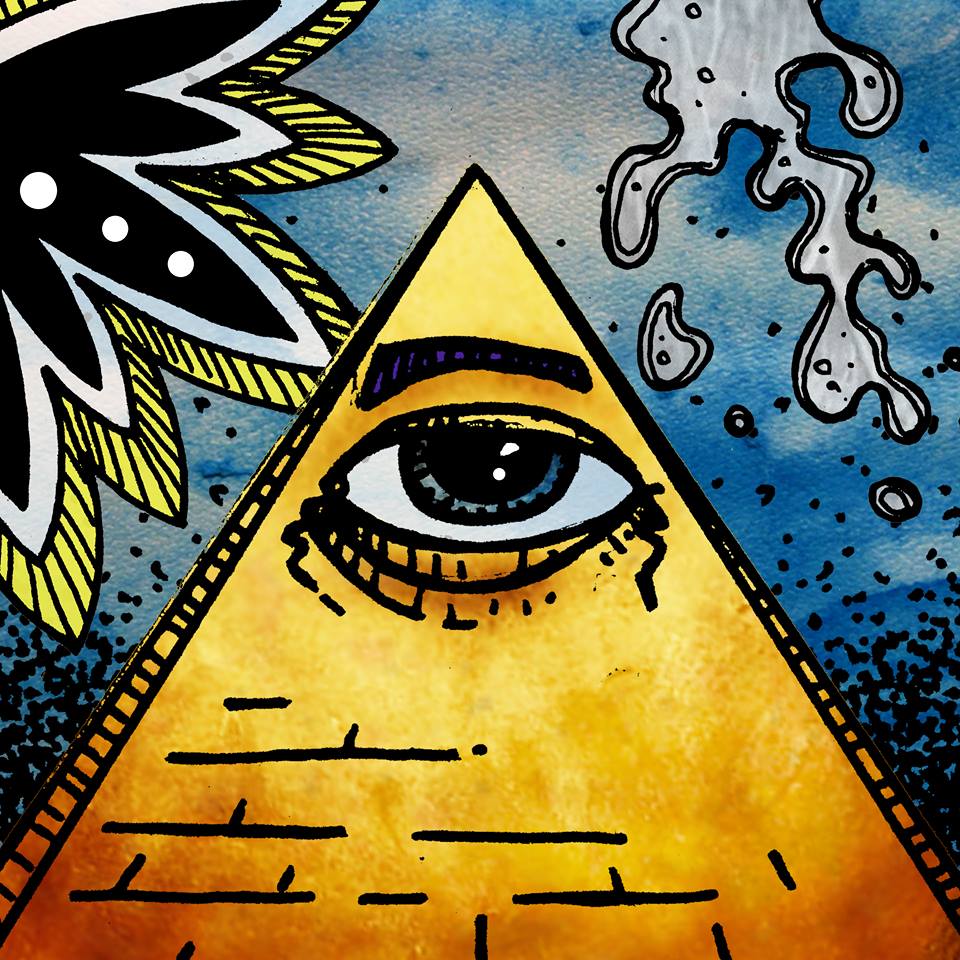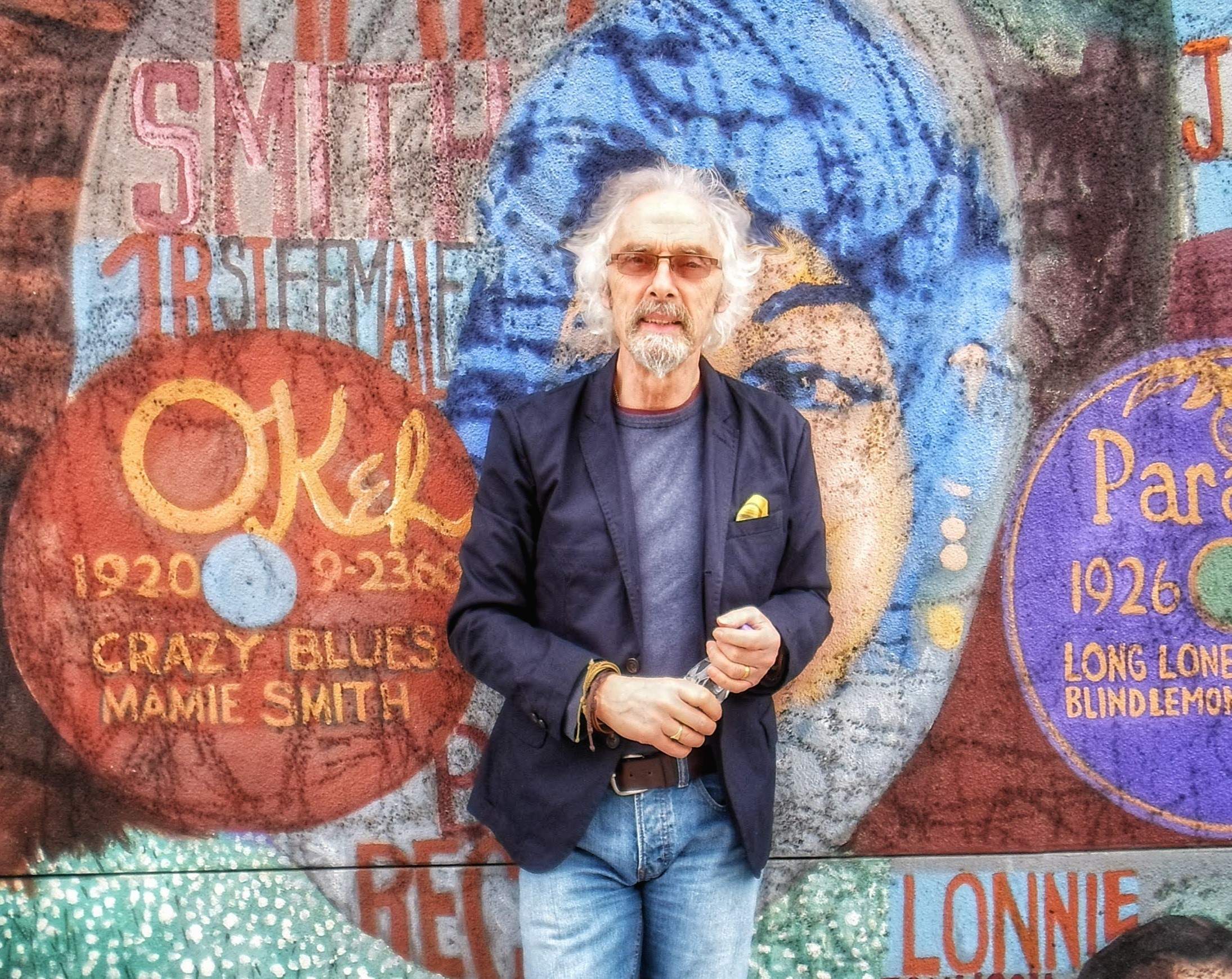Children of the Mushroom: The Untold Story of a 60s Garage Psych Band
Back in the mid-’60s, the garage and psychedelic scene was booming, but most bands barely left a trace—usually just one or two singles. Among these fleeting acts were some kids who discovered psilocybin early on, and one of them was Children of the Mushroom.
Formed in Thousand Oaks, California, a small town near Los Angeles, the band originally went by The Captives. By the Summer of Love, they had transformed into Children of the Mushroom.
The lineup featured Jerry McMillen on guitar, vocals, and flute; Bob Holland on organ; Al Pisciotta on bass; Dennis Christensen on drums; and Paul Gabrinetti on guitar and vocals. Inspired by The Doors, Iron Butterfly, and the other psychedelic acts taking over LA, they carved out their own dark, mesmerizing sound.
In 1968, Hollywood’s Soho label released their astonishing single. The A-side, August Mademoiselle, written by Holland, is a blazing garage-psych masterpiece: wild Vox organ, walls of fuzz, and a haunting atmosphere that speeds along like a psychedelic hurricane. The B-side, You Can’t Erase a Mirror, penned by McMillen and Holland, flips the script…a slower, brooding track that’s equally chilling.
Children of the Mushroom perfectly capture the spirit of late-’60s garage rock: a moment when countless bands appeared, released one or two records, and vanished. Some were merely good; some forgettable. But this band produced a single that stands out as a must-have for any psych or garage collection. It’s a blazing snapshot of an era that burned fast and bright.
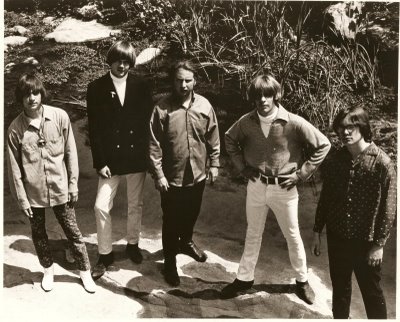
“Being in a garage band gave us a fantastic place to express our creative abilities.”
Dennis, you were the drummer. Thank you very much for taking the time to talk about your band. What would you say were some of your influences?
Dennis Christensen Swanson: My influences in music began in the 1950s. I had an old AM radio in my room and somehow gravitated toward the rock music I found on it. I remember hearing songs such as “Rock Around the Clock,” “Tonight,” and “You Ain’t Nothing But a Hound Dog.” At the same time, I was influenced by Cubby from the Mickey Mouse Club. That was when I was bitten by the drum bug. I knew deep down that I wanted to play a set of drums. I expressed this to my parents, and they signed me up for accordion lessons. Like a good 1950s kid, I tried to please my parents and stuck with the accordion for as long as I could.
Another major influence for me in the 1950s was The Adventures of Ozzie and Harriet. I was always captivated by Ricky Nelson’s early tunes; they moved me. As I grew into a teenager, The Beach Boys and many other groups, too many to list, stirred my heart. I just could not get away from the radio. Of course, when I saw The Beatles on the Ed Sullivan Show, I was completely blown away. I made up my mind then and there that I had to get into a band and play drums.
The Captives and The Mushroom Lady are two names associated with your band. Can you talk about being in the band prior to Children of the Mushroom?
My first band was The Captives, which evolved into Children of the Mushroom, then into The Mushroom, and in 1970 became the group Lady. Jerry McMillen and I stayed together in all of these groups. I quit the band Lady a few months after it was formed. The lifestyle of being in a band, all the dynamics and relationships, and the price I paid for the excesses of the time all took a heavy toll on me. My life had been dedicated to the band, but one night I started having a breakdown. The only thing I knew to do was get down on my knees and cry out to God for help. I left the band and went on to a new life.
Around 1965 your new band was formed.
The Captives formed in November 1965 and were the first band. Jerry McMillen and I met at Thousand Oaks High when we discovered we were sitting next to each other in class. Somehow we got on the subject of music, and Jerry told me his band was without a bass player and a drummer. My neighbor Mark McKean and I had been getting together to play Beatles tunes, he on his acoustic guitar and I on a set of books, so we jumped at the opportunity to join the band. I ordered my first drum set right away from the Montgomery Ward mail order store, and off we went.
Pat Wilnow, who played rhythm guitar, left The Captives in May 1966. Mark McKean switched to guitar, and Al Pisciotta was asked to play bass. Jerry McMillen played lead, and I played drums. We were all very green on our instruments, but we had a strong desire to get better.
In July 1966, Mark McKean left the group and was replaced by Scott Lee on guitar and vocals. Mark Amparan played keyboard for a short time.
In December 1966, The Captives were practicing in the garage at my house. We played very loud using Al’s Fender amp and Jerry’s Vox amp when a kid with glasses rode up on his bike and said he wanted to join the band. We went over to Bob Holland’s home, and he immediately blew us away when he sat down and played “The House of the Rising Sun” with a bass line on foot pedals. We told him we wanted him in the band. He came with a new Vox keyboard and a Silvertone amp. Bob was a musical prodigy, and his influence would play a key part in our future.

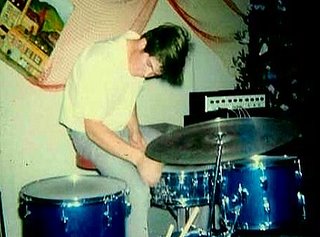
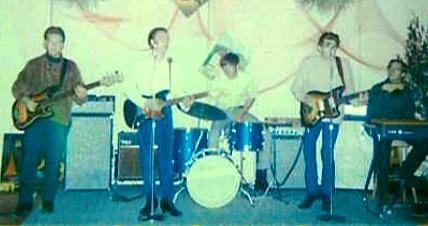



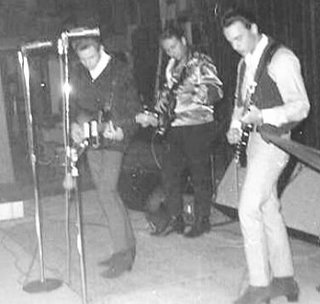
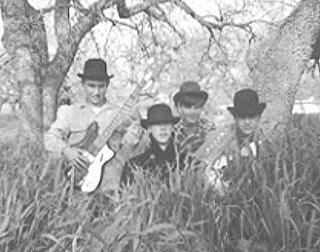
You released only one single, which contained “August Mademoiselle” on the A side and “You Can’t Erase a Mirror” on the B side. How did you get in contact with the label and how many pressings were made?
Well, I believe our future producers, Dick Wayne Parker and Dick Torst of 2D Productions, saw us perform at a venue. They approached us about doing a record. I remember they met with all of our parents to discuss the record contract. I believe Bob Holland, our keyboard player, and Jerry McMillen wrote the music for the two songs. The A side, “August Mademoiselle,” was written by Bob Holland, while the B side, “You Can’t Erase a Mirror,” was written by Jerry McMillen and Bob Holland. I believe we had a regional charting of our song “You Can’t Erase a Mirror” in the El Paso area of Texas in 1968. There was talk of us going on tour, but it did not happen. It was an amazing experience for me to hear our record playing on a local AM radio station while driving in the car one day.
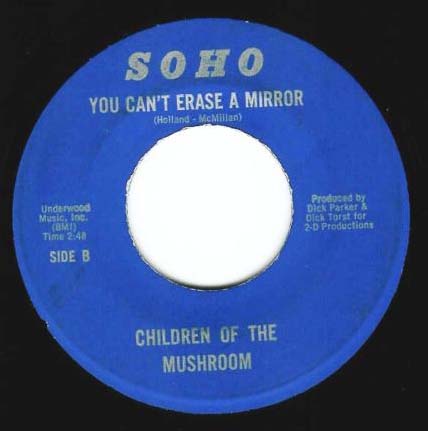
As for the number of 45s that were actually pressed, I have no idea. Our 45 later became a collector’s item. Record collectors consider us an obscure psychedelic garage band. One of the 45s last year sold for over five hundred dollars on eBay.
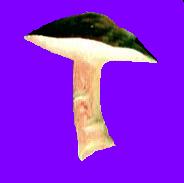

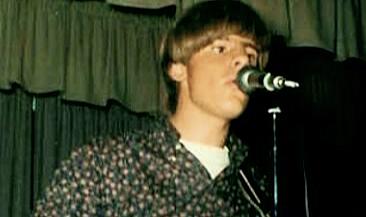
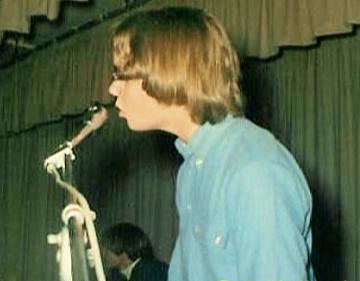
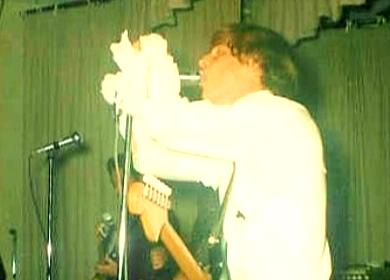
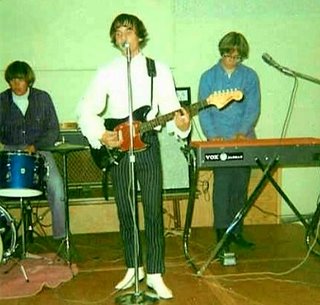
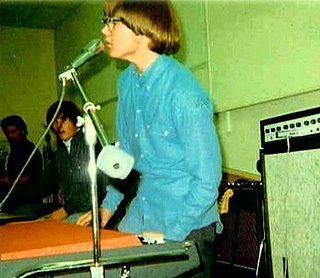
What can you tell me about the songs?
As a rock drummer, I was always more interested in the feel and dynamics of the songs than in the words. We played so loud that I could never hear all of the words anyway. I believe I heard Jerry mention in a radio interview he gave two years ago that Bob Holland had my mother in mind when he wrote “August Mademoiselle.”
What are some of the strongest memories from recording and producing the 45?
I have a distinct memory of having some very intense practices at Bob Holland’s home as we got ready to record. His parents were very gracious in allowing us to practice in their living room. Bob’s father was very creative in coming up with a mushroom pin for promotional purposes. They can be seen on Jerry and me in the band’s black and white photo.
On the Saturday we recorded, we drove down to a studio in Hollywood called Nashville West. I remember being told that Iron Butterfly had recorded there as well. I do not remember how long it took, but I was able to make it back in time to take my girlfriend to a movie that night. It was, so to speak, our crowning glory to be able to record even one 45 rpm record. One distinct memory I have of that session was watching Jerry McMillen create some awesome feedback. We were a very young group at the time. I believe Bob Holland was fifteen, the youngest, and I was eighteen, the oldest, when we made the record.
Did you release anything else? Does any unreleased material exist?
Paul Gabrinetti left in the spring of 1968 and was replaced by Jim Rolfe. At that time, we decided to shorten the name to The Mushroom. Jim’s creative abilities helped us move forward with more original songs. Sadly, we were never invited back into the studio to record these tunes. We did perform them in public, though. A garage recording of some of these songs does exist. On my personal MySpace page, I have a link to “The Mushroom Theme,” one of these home recordings.
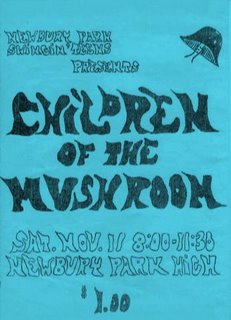

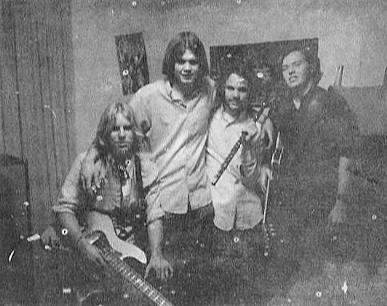
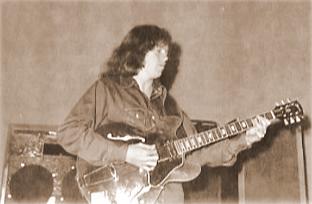
Then you were called Lady?
After Bob Holland left the group, The Mushroom, we invited Larry Weisman to join with his keyboard and bass. Jerry picked up a flute, and we began working on new music influenced by Jethro Tull. At that time, we changed the name to Lady.
What can you tell us about concerts?
Well, we played so many places. A few area battle of the bands and too many high school dances to easily remember. We were mostly comfortable in concert type settings. Our music was not easily danced to. One of the songs we covered before we became completely original was “In-A-Gadda-Da-Vida” by Iron Butterfly. Some kids liked my rendition of the drum solo, and some were frustrated because they just wanted to dance. We were not a dance band. I used to play my drums like a maniac. A couple of times I was rocketed off the stage with the drums following me at the end of one of our songs.
What happened in the 1970s and onwards?
In 1970, I left the band and never looked back. I became the church drummer for Ventura Peoples Church choir. We traveled to London, England with the Bill Severn Evangelistic Organization in 1973. The choir performed all over London. I remember playing next to a giant statue of a lion in Trafalgar Square. I then became the Christ Church of Ventura’s worship drummer for a number of years.
I lost contact with the band for almost thirty-five years until one night at work a few years ago when I typed in “Children of the Mushroom 1967” into an internet search engine. I was very surprised to find that our songs had been picked up on several compilation albums and were being played around the clock on various internet stations. That led to an invitation from Hans of “Beyond the Beat Generation” to arrange an interview. In a short time, all of the members of Children of the Mushroom were back in touch. Our lead player, Jim Rolfe, organized the Thousand Oaks Band Tree. Children of the Mushroom, along with various local period bands, performed once again.
I raised five kids in the 1970s and 1980s, remarried, and began raising three more kids in the 1990s.
What are you doing these days?
I spend a lot of time on the internet. It brings me great joy to be in touch with young music friends around the world and to share my band experiences. It is kind of my hobby.
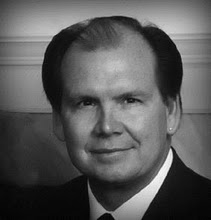
I would like to thank you for taking your time. Would you like to add something else?
I would like to thank you, Klemen, for the opportunity to share a little about Children of the Mushroom. What a great opportunity we had to be one of the thousands of 1960s groups to cut a 45. Being in a garage band gave us a fantastic place to express our creative abilities. It was a real-life school of rock.
Klemen Breznikar
